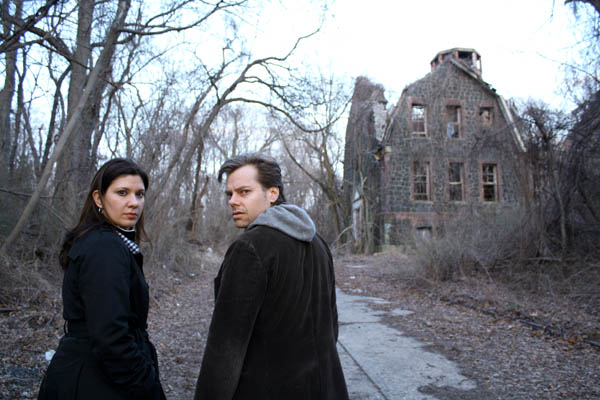|
Reviews of Recent Independent, Foreign, & Documentary Films in Theaters and DVD/Home Video

CROPSEY In the Southwest, the local bogeyman is the wailing La Llorena, a child-snatcher haunting the riverbanks. For Staten Island-bred Joshua Zeman, the legendary child predator was named Cropsey, an escaped mental patient lurking in the nearby ancient woods. But this regional urban legend has a ring of truth. In 1987, Jennifer Schweiger, a 12-year-old with Down syndrome, was one of several mentally challenged kids who vanished, all within fairly close proximity to each other. One case went back as far as 1972. Not long after she was reported missing, a community search group discovered Schweiger’s recently buried body 150 feet away from the campsite of Andre Rand on the grounds of the former mental institution Willowbrook State School. This horrifying documentary stirs up, if not confirms, your worst fears. A news photo of a stooped, drooling Rand during his perp walk certainly fit the central-casting profile of a deranged killer. The challenge for prosecutors, whether in the Schweiger case or later in Rand’s 2004 trial for the 1981 kidnapping of six-year-old Holly Ann Hughes, was the lack of scientific evidence. Both trials depended heavily on eyewitness accounts and circumstantial evidence—interviews of eyewitnesses in the Hughes trial will raise eyebrows, and not simply because many of them were former drug addicts and alcoholics with suddenly clear memories. Why didn’t they step forward years earlier when the girl went missing? The testimony of one state witness matched almost word for word an eyewitness account of a store cashier who had seen Hughes the night she disappeared. Based on what’s uncovered in the film, the ruins of Willowbrook have never been entirely abandoned even though the huge complex, with its interconnected underground tunnels, has been closed since the early ’80s. What spurred its closure were revelations from then up-and-coming reporter Geraldo Rivera’s unsettling exposé on the filthy, abusive conditions in the children’s psychiatric wing. Forty years later, the footage is still appalling, so powerful that the filmmakers don’t have to resort to fast-cut edits of the rocking, naked children for shock value. Smartly, the filmmakers don’t push one theory over another—whether Rand was a susceptible target or if he had accomplices, among the many possibilities. They take the viewer down one dead end—probing into Rand’s relationship with his mother—and pursue the most sensational suppositions, a thriving satanic cult that sacrifices children. One reporter describes the defendant as a “white trash Jim Jones” who exerted demonic power over a homeless population camped out in the woods. However, Zeman and Brancaccio only mention in passing that Rand at one time worked at Willowbrook. (When the directors venture out into the hospital’s graffiti-scarred ruins after dark, the film borrows a page from The Blair Witch Project, where what scares you is what you can’t see.) Ultimately, they leave it to viewers to parse the conflicting interviews to surmise their own theories. Zeman gives himself a lot of legroom by offering, “The truth is a range of possibilities,” without signaling defeat or leaving the audience feeling adrift. Given the
subject matter, the film is absorbing, if not lurid, and despite the
stomach-turning material, Cropsey isn’t too dire, too hopeless.
Clips of the children’s parents show remarkable poise and restraint
under duress. They want justice, of course, and for Hughes’s parents, to
find out the whereabouts of their daughter’s body. Hughes’s father is
right; the word, “closure,” in these circumstances, is ridiculous
and out of place. Community activist Donna Cutugno, a neighbor of
Schweiger, serves as the conduit for the audience seeking some sort of
justice and resolution, lessening the sense of helplessness. (She was in
the search party that discovered the girl’s body. The other children
have yet to be found.) The tough-talking Cutugno delivers the
justifiable anger, the directors, the lingering questions. Kent Turner
|

